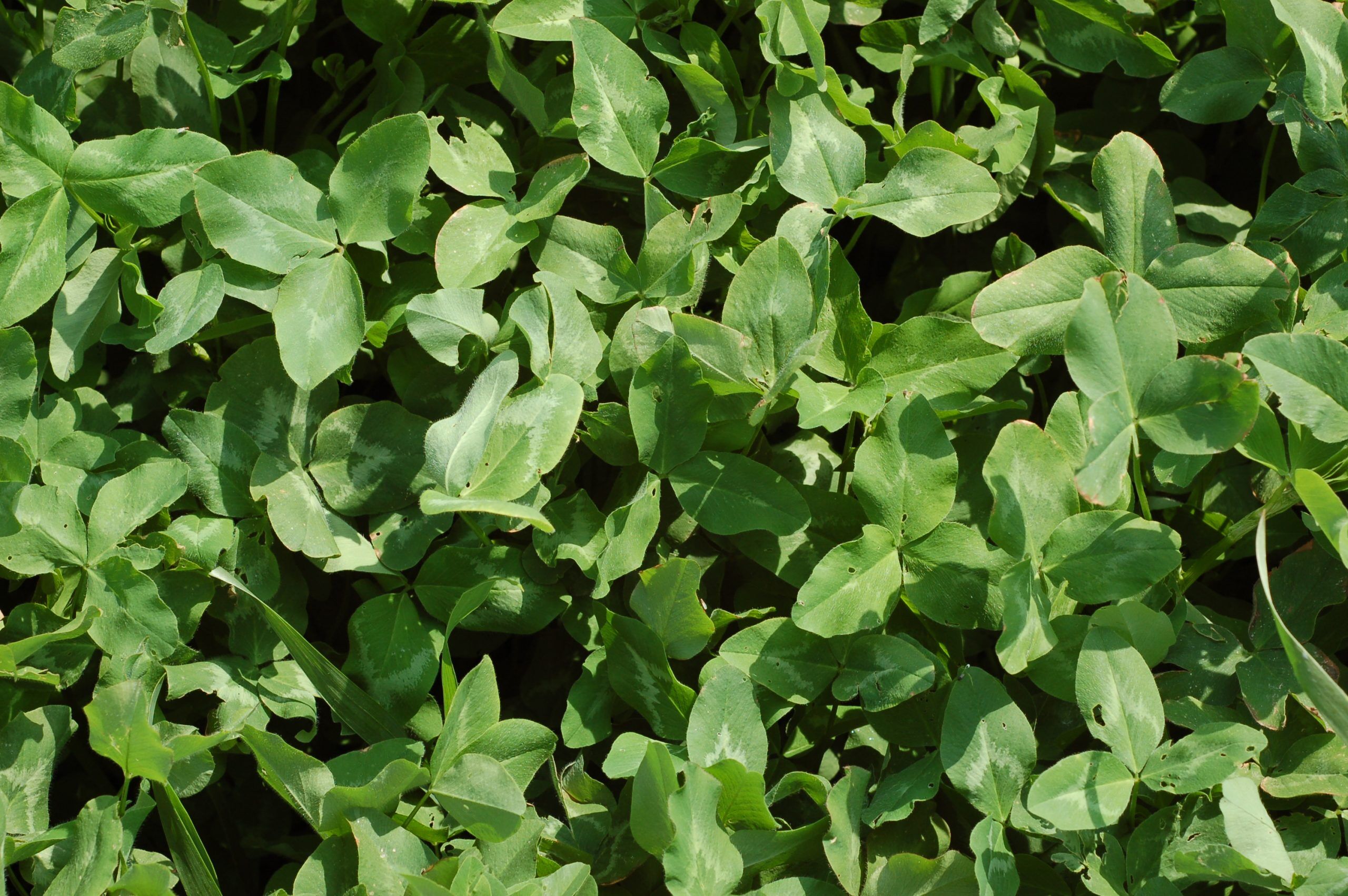Ladino is the largest type of white clover. It grows 2-4 times as large as common white clover. In a forage context, it is high-yielding, and as a cover crop it is an excellent N producer (80-130 lbs/A when terminated the year after establishment). The C:N ratio is low, so it will break down and release nitrogen more rapidly. Since the majority of the nitrogen is stored in the roots, partial tillage is good for breaking up the material and speeding up N release.
The root system is shallow, so it does better in silt soils and moist areas.
Smaller white clovers grow low to the ground and spread prolifically by stolon (runners along the ground), but Ladino clover grows larger and does not have the same spread-ing tendencies. In the case of Ladino, higher yield is somewhat of a tradeoff for less spreading ability, resilience under grazing pressure, and traffic tolerance than smaller white clovers.
Forage: For grazing, dry hay or wet hay, it is best to mix any clover with grass—either in the stand or supplement the feed with grass hay. This reduces the risk of bloat but still allows the animal to benefit from the high protein, highly digestible clover. Clover should be about 50-60 percent of the stand. Grazing or cutting to leave at least a 3-4 inch stubble is best practice to maintain the balance of grass to legume in the stand. Anything shorter would favor the clover, since it tolerates lower cuttings. Adding white clover to a stand is a good way to increase overall forage quality.
Living mulch, over-seeding, inter-seeding: Ladino can make a good living mulch between vegetable rows or fruit trees and berry bushes. It will outcompete weeds and provide ground cover while fixing nitrogen. It is traffic tolerant and a good choice for protecting wetter soils. It is also somewhat shade tolerant for growing under the cano-py of another crop, but will grow better when the crop is taken off and the canopy is opened.
As a living mulch, it is low maintenance in its labor requirement for mowing and up-keep. It should be managed carefully at the beginning, however, to prevent too much competition with the main crop. In dry times, weeds may outcompete it for moisture.
Cover crop for strip tillage: Summer vegetables such as sweet corn work well planted into tilled up strips of white clover, with the remainder left between the rows as living mulch.
Pollinator: If allowed to flower, white clover’s blooms attract pollinators and other beneficial insects. It can be intercropped or grown as a border to draw in beneficial insects.
